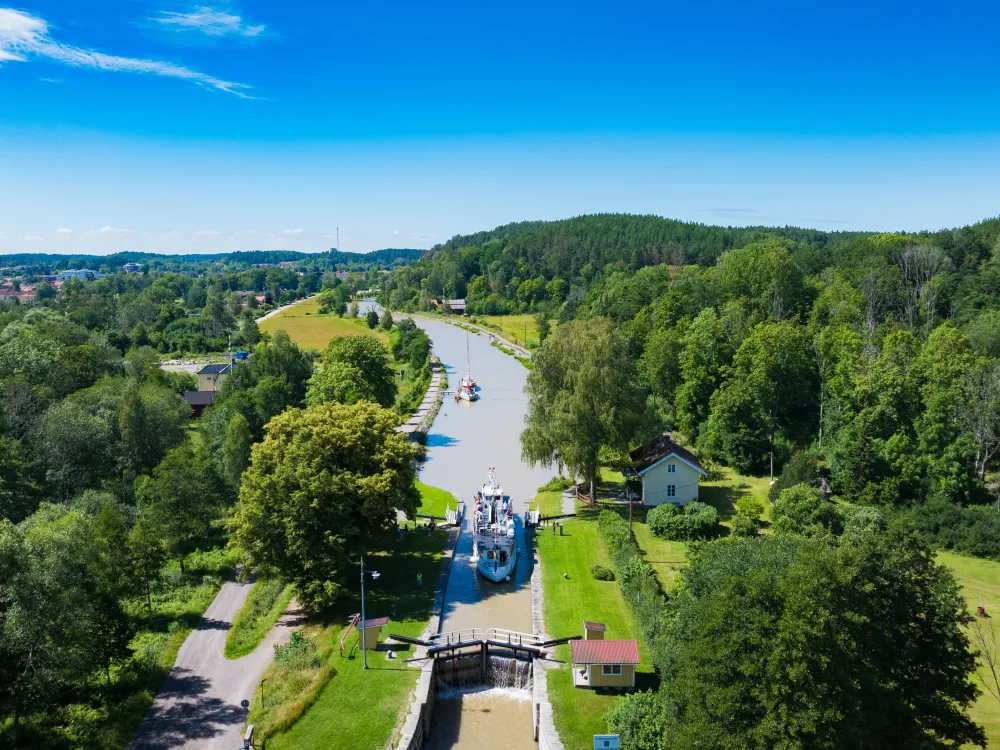The Tegelbruket Lock
Read about The Tegelbruket Lock's formal name, year of construction and technical facts. Learn the history!
Product description
Formal name:The Göta Canal Directorate
Year of construction: 1832
Technical facts: The lock is a single lock with a rise of 2.3 metres. Adjacent to the lock lies a so-called spillway, to prevent flooding from the nearby stream Igeltorpsbäcken. The Tegelbruket lock, also known as “Nyqvist’s Lock” was operated by members of the Nyqvist family for an impressive 67 years. First came gardener Johan Ludvig Nyqvist who worked as a lock keeper from 1875 to 1915. On April 1, 1915, he was succeeded by his son, Knut Harald Nyqvist. Like his father, Knut was not only a lock keeper, but also a worker and carpenter, in the service of the canal company up until 1952. The story doesn’t end there, however. After Knut Nyqvist left, his son-in-law Eric Jarlberger took over. He remained in charge of the Tegelbruket lock until 1959 and then moved to Söderköping to work as a lock keeper for another 21 years before retiring in 1980.
About half a kilometre east of the Tegelbruket lock lay the site of the canal company’s own retirement home, Musko, or perhaps poorhouse is a better name for it. It is believed that the building initially served as part-time accommodation for the Russians participating in canal construction. 1913 saw the passing of the last retiree living there, at the age of 94. After housing destitute widows and daughters of canal workers for decades, Musko fell empty and was eventually demolished in 1945.

